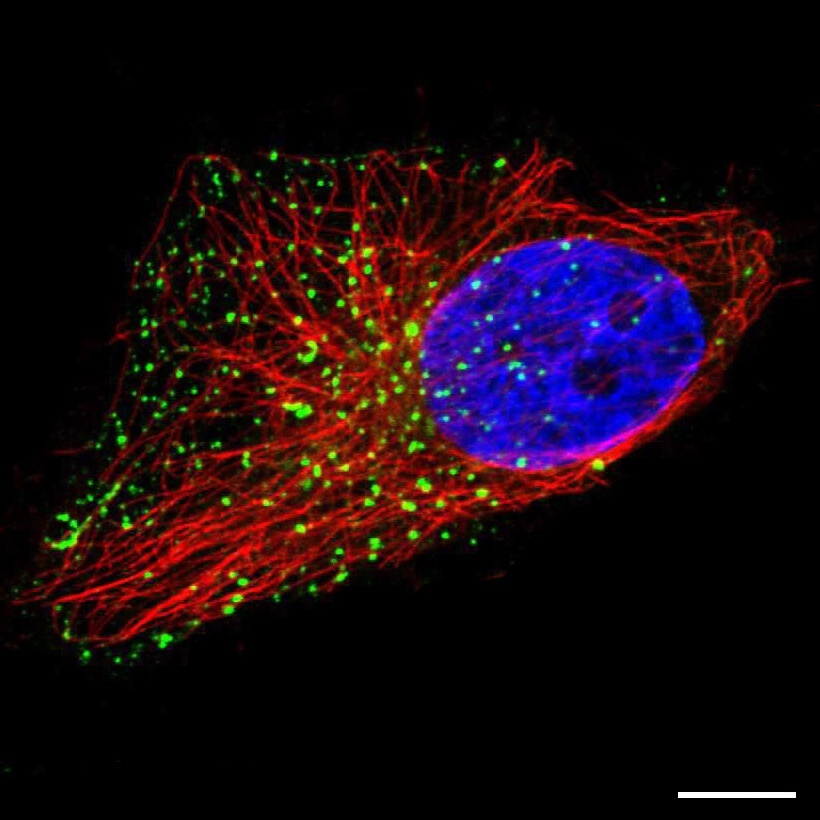DictionaryVesiclesVesicles 
VesiclesVesicle is a collective term for a number of different, small membrane-bound organelles. They are often involved in the intracellular transport of proteins and membranes between organelles and in the release of substances to the outside of the cells, or have specialized metabolic functions. Four examples of vesicles that are commonly found in the human cell are listed below. EndosomesEndosomes are the main organelles for sorting material that has been taken up from the exterior of the cell by the plasma membrane (endocytosis). The endosomes can then either recycle its contents by bringing it back to the plasma membrane or degrade it by fusing with a lysosome. LysosomesLysosomes are filled with hydrolytic enzymes and are responsible for degrading molecules within the cell. They can fuse with late endosomes, creating so-called endolysosomes, which degrade the material within the endosome. PeroxisomesPeroxisomes contain enzymes that are linked to various metabolic pathways. Especially the breakdown of fatty acids is one of their major functions. Peroxisomes are also the organelle where hydrogen peroxide is degraded and used for other biochemical reactions, e.g. the oxidation of phenols or alcohol. Lipid dropletsLipid droplets are specialized organelles for the cellular storage of neutral lipids. They are of various size and have a unique structure consisting of a hydrophobic core containing the lipids, and a surrounding phospholipid monolayer with attached proteins. Immunofluorescent stainingVesicle stainings usually appears as small and bright dots in the cytoplasm. Lipid Droplets stainings can be identified as it results in a round, perfect ring-like pattern. It is much more difficult to distinguish between the other kind of vesicles solely based on the staining pattern, however they vary in their size, number, and distribution within the cytoplasm: endosomes are usually located close to the nucleus and the Golgi Apparatus. Lysosomes are also often located close to the Golgi apparatus, but they are larger and more densely stained. Peroxisomes are spread throughout the cell and possess a more elongated shape. Although the staining pattern can indicate towards a type of vesicle, there is no certainty without further validation by other methods like co-localization with typical marker proteins. Therefore vesicle-like stainings are annotated as "vesicles" in the Human Protein Atlas and the terms "endosomes", "lysosomes" and "peroxisomes" are only used if colocalization experiments were carried out. Read more about the proteome of the vesicles. |